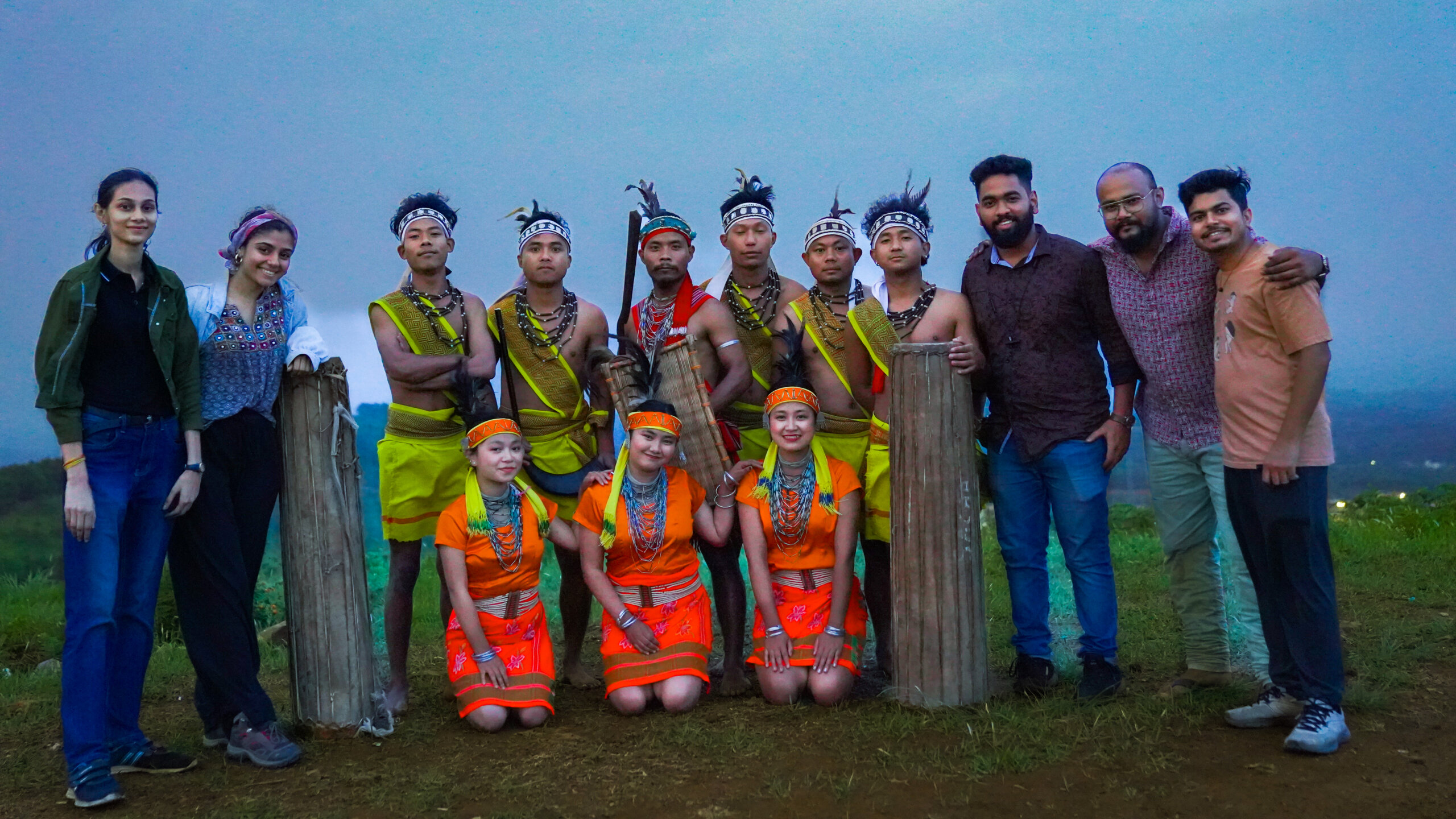
A sight of Wonder – The Warrior dance of Wangala Festival
Our documentation in Meghalaya was a truly special occasion as it marked our first time capturing the essence of folk music here.
Meghalaya became our home away from home, where everything was so fresh to the eyes. The place, the weather, the people and above all, its music.
We discovered that Meghalaya is extremely culturally rich, and music embodies their culture; it speaks both in the shade of pure traditional folk and, of course, for rock and roll, as we know Shillong being the rock capital of India.
Meghalaya comprises three main tribes: the Khasi, Jaintia, and Garo.
Our recording journey of Meghalaya’s folk musicians commenced with the Garo tribe, focusing on the captivating “Wangala dance.” During our conversation with the group’s leader, Jingjang A Sangma, he provided us with valuable insights into the grandeur and significance of this Garo dance form.
Performed joyously on the occasion of the 100 drums Wangala festival, this festival is of immense importance for the Garos, often accompanied by a series of rituals and, of course, music and dance as a part of the celebration.
The Wangala dance holds significant meaning in the Garo culture. It serves as an expression of gratitude to the harvest god, Misi Saljong, while also issuing a challenge to potential adversaries, showcasing the valour and bravery of the Garo people.
The Wangla dance is a spirited celebration of the harvest season. During the Wangala dance, the Garo tribe designates the “nokma” or village headman as the priest, leading the ceremonial proceedings. The men showcase their musical talents by playing the horn and lok drums, while the women gracefully form formations around the nokma, paying homage to Misi-Saljong (Sun god), the revered deity.
Jing also mentioned that traditionally, in a few villages of West Garo Hills, offerings and rice beer are presented to the village chief, “Nokma,” before everyone embarks on a cheerful procession from house to house, exchanging wishes for a bountiful harvest. The chant of victory, “Awhowe,” resounds, met with a chorus of “awhuhu” from the participants. This vibrant cultural tradition takes place in October or November and encompasses approximately 52 different elements within the Wangala dance.
The distinctiveness of this form lies in its reliance on Garo chants and slogans rather than traditional song formats. These chants are accompanied by various instruments, including long-shaped drums (Dama), gongs, buffalo horns, and more.
Jing’s dance group members showcased vibrant and captivating costumes and accessories, adding to the overall appeal of their performance. Their attire not only represented their Garo tribal identity but also set the tone for their expressive dance. The girls skillfully portrayed meaningful actions, such as gracefully turning banana leaves, serving rice beer, and gesturing towards the moon. Meanwhile, the boys rhythmically danced alongside their drums, chanting with joyful enthusiasm, perfectly complementing their partners’ movements.
The group was adorned in colourful garments like dakmanda, daksari, or gando, accompanied by feathered headgear known as do’me. Led by Jingjang, the group consisted of one male as the warrior, three skilled boys playing the Dama (drum), three graceful girls as dancers, and two talented instrumentalists on the Rang (gong) and the Adil (wind horn) instruments. Recording their captivating performance atop a hill during sunset welcomed us into the enchanting musical world of Meghalaya. The perfect alignment of that moment, coupled with the group’s remarkable precision in their art form, left us truly impressed and in awe of their commendable talent.
The group comprised a collective of young and immensely talented performers, each radiating an artistic spirit. Witnessing their unwavering support for one another throughout the performance was truly heartening. Their shared dedication to safeguarding and promoting Garo culture across the nation left us profoundly inspired. Engaging with these performers was a delightful experience, as their youthful and infectious energy effortlessly lifted our spirits.
– Meghal Sharma (Research Fellow)
